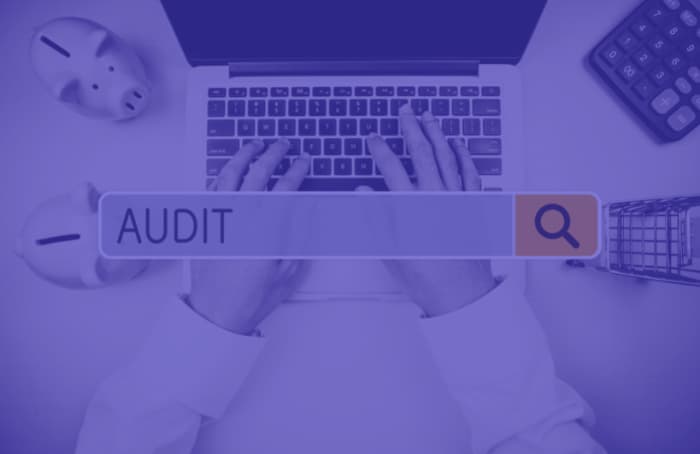What is a content audit?
A content audit is a way to review and analyse all the content on your website. It helps you identify what’s working and what’s not, so you can make better decisions about your content strategy.
Conducting a content audit can be a lot of work, but it’s worth it. By looking at your content closely, you can figure out what needs to be updated or removed. You can also see how your content is performing and make changes to improve it.
To do a content audit, you need to:
Set goals and objectives for your content. This will help you focus on what’s important.
The goals and objectives for your website content will depend on your specific business and audience.
The goals and objectives you should aim for are the following:
- Increasing brand awareness and visibility
- Generating leads and conversions
- Improving search engine ranking and organic traffic
- Providing valuable and relevant information to your audience
- Building trust and credibility with your audience
- Engaging and retaining your audience
- Driving sales and revenue for your business
It’s important to have clear and specific goals and objectives for your content marketing strategy. This will help you focus your efforts and ensure that your content is aligned with your business objectives. It’s also important to regularly review and update your goals and objectives to ensure that they remain relevant and achievable.
Make a list of all the content on your website. This is called a content inventory.
A content inventory is a list of all the content on your website. It helps you see what you have and what’s missing.
For example, let’s say you have a website that sells outdoor gear. Your content inventory might look something like this:
- Homepage: This is the main page of your website. It gives people an overview of your company and shows them your featured products.
- About us: This page tells people about your company. You can share your history, mission, and values here.
- Products: This page lists all the gear you sell. You can organize it by category to make it easy for people to find what they’re looking for.
- Blog: This is where you publish articles and guides on outdoor activities and gear. You can share tips, stories, and product reviews here.
- Contact us: This page has a form for people to contact your company. You can also share your phone number and email address here.
- Privacy policy: This page tells people how you handle their personal information. You need to have this page to comply with the law.
- Shipping and returns: This page has details on how you ship your products and how people can return them if they need to.
- Customer service: This page has contact information and answers to common questions for people who need help with your products.
As you can see, a content inventory is a helpful tool for seeing what’s on your website. It can help you identify gaps and make sure you have all the pages and content you need.
Check the quality and relevance of your content. Look for content that is old, low-quality, or no longer fits your goals.
There are several plugins that you can use to conduct a content audit on your website. Some popular options include Ahrefs, Semrush, and Screaming Frog. These tools allow you to crawl your website and generate reports on various aspects of your content, such as page titles, meta descriptions, headings, and more. They can also help you identify issues such as duplicate content, broken links, and other problems that can affect the performance of your website in search engines.
To classify and check the quality and relevance of your content, you need to figure out how to organise it and what to look for. Here are some ways to do this:
- Categorize your content: Put your content into different groups, like types of content, topics, or audience segments. This will help you see if you have everything you need and make it easier to assess the quality and relevance of each group.
- Assess the quality of your content: Look at how well your content is written, formatted, and designed. See if it’s accurate, clear, and easy to read. Identify areas that need improvement and prioritize updates.
- Evaluate the relevance of your content: Think about how well your content fits your business goals and audience needs. See if it’s up-to-date, covers the right topics, and provides value. Identify content that is no longer relevant and make decisions about what to do with it.
In general, you need to regularly review and assess your content to make sure it’s high-quality, relevant, and aligned with your business goals.
Evaluate the performance of your content. Use tools to see how well your content is doing and make changes to improve it.
To evaluate the performance of your content, you need to see how well it’s doing. Here are some ways to do this:
- Use analytics tools: Most websites have tools (Google Analytics) that track how people interact with your content. You can use these tools to see how many people are reading your content, how long they stay on the page, and what they do after they read it. This can help you understand how well your content is performing.
- Ask your audience: You can also ask your audience directly about their experience with your content. You can do this with surveys or focus groups. This can give you valuable feedback on what’s working and what’s not. Why not write a social media post and ask them straight away?
- Compare to industry benchmarks: Another way to evaluate the performance of your content is to compare it to other websites in your industry. This can give you a sense of how well your content is doing compared to the competition.
- Use the insights from your audit to make better decisions about your content. This will help you create and promote content that gets results.
You should only do this for pages that are intended to rank in organic search. In other words, don’t use it on pages like “About” pages that are not intended to rank on Google. These pages may not rank on Google, but that is not their purpose.
Let’s recap
A content audit is a valuable way to improve your content. It takes time and effort, but it can help you create content that is high-quality and relevant to your audience.


